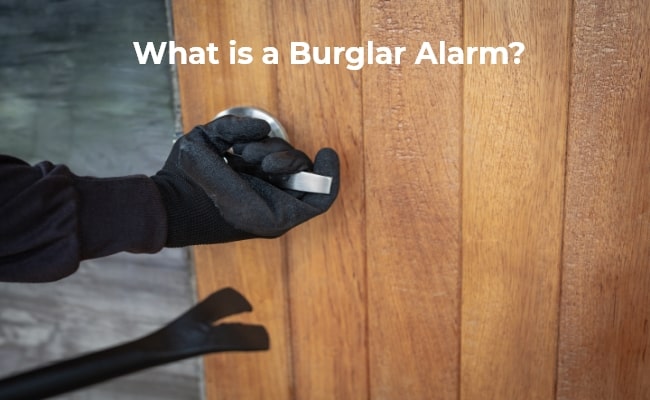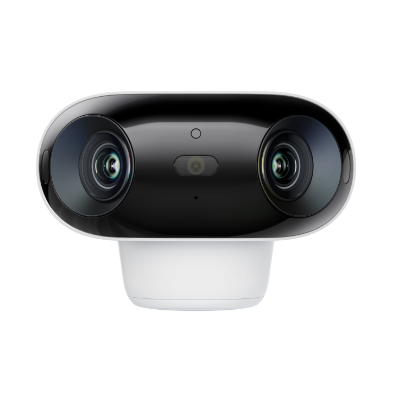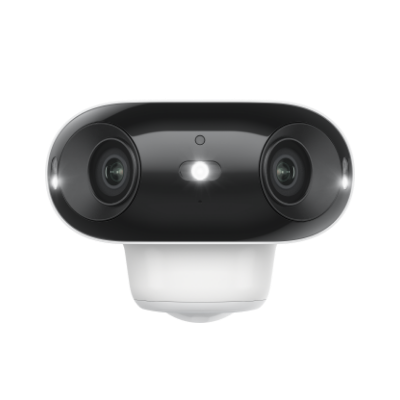What is a Burglar Alarm? Understanding the Basics and Importance

A burglary alarm system is a security system designed to detect and alert of an unauthorized intrusion into a home, business or other location. When sensors in the system detect motion or certain activities, the control panel triggers loud alarms and alerts monitoring centers or police to a potential burglary in progress.
Alarms against burglary provide an extra layer of security and peace of mind by discouraging burglars and enabling a quick response when break-ins occur. Let’s talk about the exact burglar alarm meaning in this article.
What is Burglar Alarm?
A burglar alarm, also called an intruder alarm or security alarm, is an electronic system designed to detect and alert of an unauthorized entry or intrusion.
Sensors monitor doors, windows, motion, glass breakage or other activity and notify users by sounding loud sirens or bells.
Many systems also send alerts to monitoring centers or directly to law enforcement when triggered. The loud noises and police response help scare off intruders and prevent loss of property due to theft or vandalism.
How do Burglar Alarms Work?
Burglar alarm systems work by using a network of sensors to detect intrusions and alert users through sirens and by transmitting signals to the central station or police. Here is an overview of how they work:
- Sensors on doors, windows, ceilings, motions detectors and other areas monitor activity and status. They communicate with a central control panel.
- When the control panel receives a signal that a sensor has detected motion or been tripped, it triggers the alarm system.
- Loud bells, sirens or recorded verbal warnings sound throughout the property, scaring away intruders.
- Alerts are transmitted over cellular networks or phone lines to a professional monitoring center and/or police.
- Monitoring center dispatchers verify the alarm and notify police to request dispatch immediately.
More advanced systems even include live video monitoring and feeds for visual verification of break-ins. The combination of alerts and loud audible alarms usually result in the intruder fleeing before they are confronted by police or security personnel.
Components of Home Burglar Alarm System
Burglary alarm systems are made up of these main components working together:
Control Panel
The control panel is the central processor and brain connecting the various sensors and alarms. When it receives signals that sensors have detected intrusions, it triggers system alarms. Control panels have keypads, touchscreens and other interfaces that allow users to arm, disarm or program the system.
Sensors
Sensors detect intrusions by monitoring doors, windows, motion, glass breakage and other activity in the building. Common sensors include:
- Door/Window sensors - Detect doors and windows opening.
- Motion sensors - Detect movement and body heat.
- Glass break sensors - Detect the frequencies of breaking glass.
- Smoke/Heat sensors - Detect smoke and fast rises in temperature from fires.
When sensors detect activity, they send wireless signals to the control panel. Commercial systems have dozens of sensors while home systems may have just a few protecting entry points.
Alarms/Sirens
Like other alarm systems, these systems also use loud sirens, bells, recorded verbal warnings and other noisemakers. These loud 120+ decibel alarms are designed to scare away intruders and alert neighbors to call police. Some systems also emit warning sounds and verbal commands instructing the intruder to leave the premises or that authorities have been notified.
Security Cameras
Security cameras that capture video when the alarm is triggered provide visual verification of a break-in. Live feeds are transmitted to monitoring centers and recorded clips help police identify perpetrators during investigations. Indoor and outdoor cameras give wider coverage.
Keypad/Touchscreen Interfaces
Control keypads or touchscreens allow users to arm and disarm the system by entering a numeric code. This prevents accidental triggers and also signals the panel to activate when doors open from authorized entry after being disarmed. Interfaces are often mounted near doors for convenience but can be accessed remotely via apps.
Where to Use Alarm Burglar System
Because burglar alarms deter crime and enable quick response to intrusions, they have many applications:
- Residences: They can defend against home invasions and burglaries. Sensors on all exterior doors/windows and interior motion sensors provide comprehensive protection. They are a must for homes in both rural and urban areas.
- Shops: Retail stores and small businesses often keep inventory, cash registers and valuable equipment overnight. Shop alarm systems prevent smash-and-grab thefts by alerting police to break-ins.
- Offices: Office buildings also contain valuable equipment, supplies, furniture and information stored overnight. Office alarm systems deter overnight intrusions.
- Military Sites: Military bases and weapons facilities require extra security given the sensitive information and equipment inside. Perimeter sensors and motion detectors defend beyond just entry points.
- Industrial Settings: Factories, warehouses and other facilities with valuable machinery need protection against theft and vandalism. Large-scale commercial and industrial alarm systems provide security.
Monitored vs Unmonitored (Direct) Burglar Alarms: What's the Difference?
Burglar systems primarily fall into two categories: professionally monitored systems and direct (unmonitored) systems.
Monitored Alarm Systems
Monitored systems include a subscription service that connects the alarm to a professional monitoring center. When sensors detect intrusions, the center verifies alerts, notifies police and sends responders. This provides maximum security but monthly fees apply.
Direct/Unmonitored Alarm Systems
Direct alarm systems trigger sirens and lights to scare away intruders but don't include monitoring services. While cheaper initially, user responsibility for notifying police reduces effectiveness. However, direct systems still deter some intruders.
Overall, monitored systems provide better protection and response due to trained professionals handling notification. But direct alarms do enhance security over having no system at all.
Bonus: Best Security Camera for Protection Against Burglary
Reolink Argus 4 Pro
The Reolink Argus 4 Pro is an excellent choice for burglary protection with its 180° field of view and 4K color vision for clear day and night footage. It offers flexible storage options, including microSD cards up to 128GB and Home Hub integration, all without subscription fees. And with motion detection and real-time alerts, the Argus 4 Pro provides comprehensive and reliable home security.
4k 180° Wire-free Color Night Vision Camera
4K UHD 180° Blindspot-free View; Color Vision Day and Night; 30% More Battery Life; Dual-band Wi-Fi 6; Smart detection.
For users who require full-color night vision without apparent spotlights, the Reolink Argus 4 Pro is an excellent choice. Alternatively, if you want an inexpensive solution that still performs well, the Argus 4 standard version is worth considering.
4k 180° Blindspot-free Wi-Fi 6 Camera
4K UHD 180° Blindspot-free View; Dual-band Wi-Fi 6; Smart detection; Easy Installation Anywhere
Reolink Go PT Ultra
To capture clear video proof of burglaries, the Reolink Go PT Ultra battery & solar powered PTZ camera is an ideal choice. With top features and reliable performance, it enhances your home security.
The Reolink Go PT Ultra delivers super-clear 4K footage day and night for positively identifying intruders. Wide-range motion and fast focus follow the action. And wireless installation and long-lasting battery with solar charging provide flexible placement anywhere.
4K 8MP Wire-Free 4G LTE PT Battery Camera
4K 8MP; Smart Detection; 355° Pan & 140° Tilt; Battery/Solar Powered; Color Night Vision; Smart Real-Time Alert.
FAQs
What counts as a burglar alarm system?
For a security system to qualify as a burglar alarm, it needs to include sensors on entry points and interior areas, audible alarms like sirens sufficient to frighten away intruders and the ability to trigger calls or dispatches to authorities. Systems lacking alerts, audible alarms or with sensors only on a single entry door would have limited functionality that identifies them more as access controls rather than comprehensive systems.
What is the difference between a security alarm and a burglar alarm?
There is significant overlap - an burglary alarm is a type of security alarm specifically designed to prevent burglary and alert of break-in attempts. Security alarms also encompasses fire alarms, panic alarms, temperature/environment monitoring systems and other specialty alerts apart from stopping burglaries. All burglars alarms are security alarms, but not all security alarms deter burglary.
Conclusion
Burglar alarms are essential protection for any property in risk of intrusions. By leveraging sensors that detect unauthorized access combined with loud audible sirens and alerts to monitoring centers, these electronic systems deter potential thieves while triggering interventions to crimes in progress before loss occurs.
Do you think it is useful to have an alarm to protect against burglary? Share your experience with us in the comment section below! Let's discuss together!
Search
Subscribe for the Latest Updates
Security insights & offers right into your inbox



